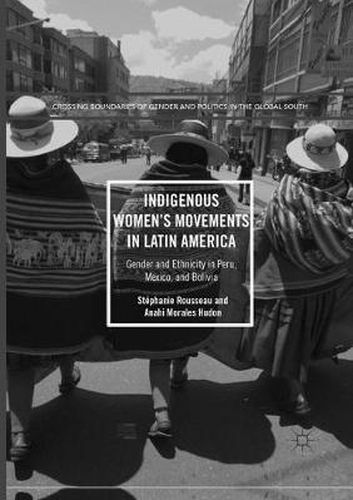Readings Newsletter
Become a Readings Member to make your shopping experience even easier.
Sign in or sign up for free!
You’re not far away from qualifying for FREE standard shipping within Australia
You’ve qualified for FREE standard shipping within Australia
The cart is loading…






This title is printed to order. This book may have been self-published. If so, we cannot guarantee the quality of the content. In the main most books will have gone through the editing process however some may not. We therefore suggest that you be aware of this before ordering this book. If in doubt check either the author or publisher’s details as we are unable to accept any returns unless they are faulty. Please contact us if you have any questions.
This book presents a comparative analysis of the organizing trajectories of indigenous women’s movements in Peru, Mexico, and Bolivia. The authors’ innovative research reveals how the articulation of gender and ethnicity is central to shape indigenous women’s discourses. It explores the political contexts and internal dynamics of indigenous movements, to show that they created different opportunities for women to organize and voice specific demands. This, in turn, led to various forms of organizational autonomy for women involved in indigenous movements. The trajectories vary from the creation of autonomous spaces within mixed-gender organizations to the creation of independent organizations. Another pattern is that of women’s organizations maintaining an affiliation to a male-dominated mixed-gender organization, or what the authors call gender parallelism . This book illustrates how, in the last two decades, indigenous women have challenged various forms of exclusion through different strategies, transforming indigenous movements’ organizations and collective identities.
$9.00 standard shipping within Australia
FREE standard shipping within Australia for orders over $100.00
Express & International shipping calculated at checkout
This title is printed to order. This book may have been self-published. If so, we cannot guarantee the quality of the content. In the main most books will have gone through the editing process however some may not. We therefore suggest that you be aware of this before ordering this book. If in doubt check either the author or publisher’s details as we are unable to accept any returns unless they are faulty. Please contact us if you have any questions.
This book presents a comparative analysis of the organizing trajectories of indigenous women’s movements in Peru, Mexico, and Bolivia. The authors’ innovative research reveals how the articulation of gender and ethnicity is central to shape indigenous women’s discourses. It explores the political contexts and internal dynamics of indigenous movements, to show that they created different opportunities for women to organize and voice specific demands. This, in turn, led to various forms of organizational autonomy for women involved in indigenous movements. The trajectories vary from the creation of autonomous spaces within mixed-gender organizations to the creation of independent organizations. Another pattern is that of women’s organizations maintaining an affiliation to a male-dominated mixed-gender organization, or what the authors call gender parallelism . This book illustrates how, in the last two decades, indigenous women have challenged various forms of exclusion through different strategies, transforming indigenous movements’ organizations and collective identities.